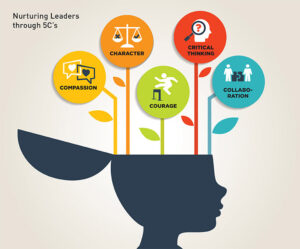I had intended to write this post sooner, but something kept distracting me…

During the second week of class, I found myself the most productive and yet the least engaged in blogs and Discord. This was because I was camping in a location with very poor cellular service, and screens became obsolete. I had to travel to a nearby town (shout out to Quilly Willy) to access the internet for all my needs, including debating against technology. Cell phones, even in the most well-intentioned and mature hands, can be a distraction.
The lure of the cell phone’s siren song is always going to be there, unless users learn how to develop healthy habits. Where do people learn healthy habits? Well, probably their phones, but before the ubiquity of mobile phones, people learned healthy habits in their homes and their schools. These devices are not just fidget spinners; they are here to stay, so whose job is it to model appropriate cell phone usage?

Can appropriate use be modelled in an environment where devices are banned? Probably somewhat, but I would argue that students need to have the real-life experience of making the choice to focus on work, to ignore the cell phone instead of it being banned outright. Imagine if getting your driving license never involved any real practice driving and just involved watching videos and sitting in the passenger seat. Not to mention, with the speed of phone upgrades and the prevalence of older devices in homes, students could just be turning in a ‘dupe phone’.
Somehow, policies find a way to disproportionately affect the most vulnerable and the families who probably can’t afford multiple phones. Phones could be the problem, or they could just be the symptom of bigger problems. The phone isn’t the distraction, but the social media apps on the phone are the distraction. These apps are what cause people to use their devices as toys more than tools.

These devices are here to stay, so we need to empower our students with the skills to be responsible digital citizens. Banning devices is the easy way and, quite frankly, the wrong way to go about solving the issue. When looking at communities (which a school, the classrooms are all communities), everyone needs to be involved in the policy decisions related to phones at the high school level. Teachers, students, administrators and parents should be working together to discuss what responsible and safe usage looks like, sounds like and feels like.
Should an outright ban be in place below high school? At what grade should we begin allowing phones?